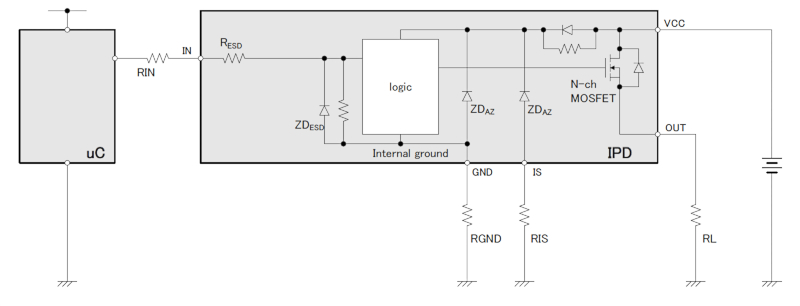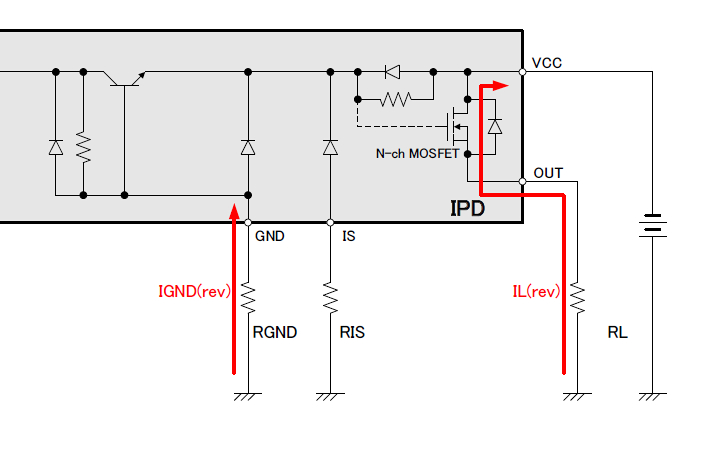Smaller Intelligent Power Device Improves Safety in E-fuse Auto Apps
The intelligent power device from Renesas Electronics has a 40% smaller footprint for automotive electronics and power distribution box applications.
Renesas Electronics has announced the new RAJ2810024H12HPD automotive Intelligent Power Device (IPD) for vehicle electronics and power distribution box applications. The IPD comes in a compact TO-252-7 package (6.10 x 6.50 mm, excluding pins) that reduces the application mounting area by 40% when compared to the standard TO-263 package.
IPDs replace the mechanical relays that have traditionally been used in automotive power boxes. They are “smart,” providing control and diagnostic signals to vehicle microcontroller units (MCU) and engine control units (ECU). They are typically smaller and more reliable than their mechanical counterparts and can be placed anywhere in the vehicle, reducing the complexity of automotive power distribution design and wiring requirements.
The RAJ2810024H12HPD is a single-channel, high-side switch built on Renesas’ new Power MOSFET process. It features a low on-resistance of 2.3 mΩ, accurate low load current detection, an integrated gate drive charge pump, and a range of protective functions to include load short-circuits, over temperature, sense current output, and GND open protection. Battery reverse connection protection with self-turn-on is also provided.
The IPD is fully compliant with AEC-Q100 and RoHS automotive standards.

New Automotive IPD in TO-252-7 package. Image used courtesy of Renesas
Intelligent Automotive Power Management
Within an automobile, the power box distributes power from the main 12 V battery bus to the various vehicle electrical loads, like lamps, heaters, and internal motors.
Traditionally managed through mechanical relays, the IPD offers a smarter, more compact, and flexible way of managing and protecting automotive power distribution systems and loads.

Automotive Power Distribution Box using IPDs. Image used courtesy of Renesas
Controlling the IPD
The IPD’s internal MOSFET switch is turned on and off by an external MCU signal passed through a 50 k ohm series resistor to the active high, 3.3 V/5.0 V logic interface.

IPD functional schematic. Image used courtesy of Renesas
Current Sensing Function
The current sensing signal is provided from the IS pin across a 1 k to 6 k ohm resistor connected to GND. The typical current sense ratio is ~ 70,000 KILIS, which represents the ratio of the current sense signal through RIS to the actual load current. The sensing circuitry offers a high level of accuracy for system monitoring, even at loads as low as 3.5 A.

IPD current sense output specified in KILIS. Image used courtesy of Renesas
Power Dissipation and Circuit Protection
With its low on-resistance (RON) of 2.3 mΩ, the IPD can dissipate about 3 W of power without exceeding internal temperature limits, assuming appropriate thermal management is implemented.
The power switch is designed to accommodate typical load currents of 30 to 35 A and has a minimum short-circuit over-current detection threshold of 150 A. In addition to load currents, internal temperatures and sense voltage levels are monitored by internal logic to protect the device and load through full shutdown or power limiting.
The nominal operating voltage (VCC) for the chip extends down to 4.5 V, but a cranking range specified below 4.0 V indicates the IPD is designed to accommodate low transient bus voltages during cold cranking. The internal Charge Pump Gate Control circuitry is likely useful to ensure the switch can properly operate through these conditions.

IPD behavior at low input voltages. Image used courtesy of Renesas
Reverse Battery Protection
In the event of a reverse battery condition where the output voltage exceeds the input, the IPD is designed to protect itself by turning on the FET when a simultaneous reverse ground current (IGND) is also detected.

Reverse battery protection. Image used courtesy of Renesas






